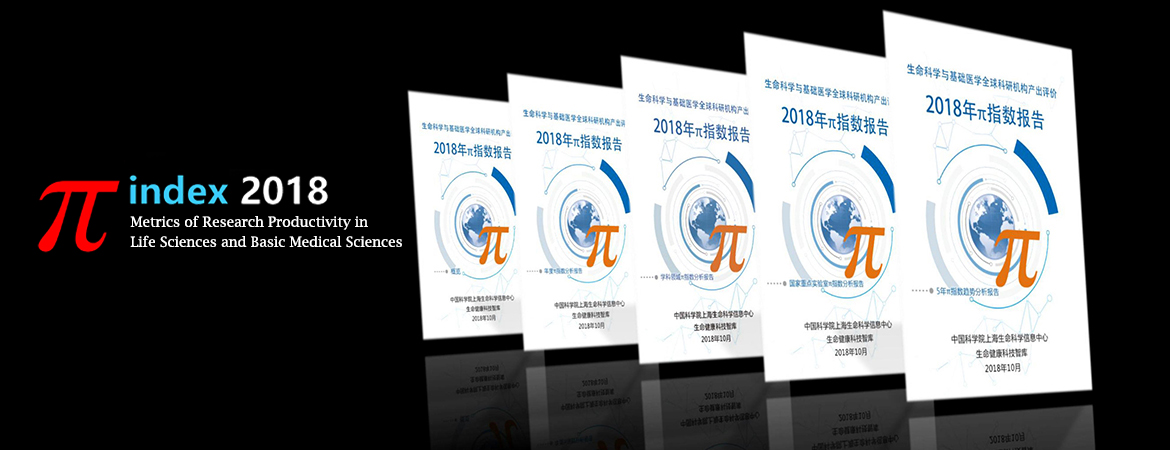- Home >> ALL News >> Highlights
2018 π Index Released
On October 29th, the 2018 Reports of π Index were officially released by Shanghai Information Center for Life Sciences (SICLS), Shanghai Institute of Nutrition and Health (SINH), Shanghai Institutes for Biological Sciences (SIBS), Chinese Academy of Sciences (CAS) at the Pujiang Innovation Forum in Shanghai.

π Index, also called Productivity Index (PI), is composed of a series of metrics of research productivity in life sciences and basic medicine. As the first research evaluation index developed in China, π index was firstly released in 2016.
Based on the analysis of scientific articles published in 122 selected science journals, the 2018 Reports of π Index include four individual parts: annual π index, 5-year trend, China’s state key laboratory analysis, and subject analysis, which is a newly developed report.
As indicated in the annual π index report, USA published the highest amount of research papers and also the largest number of papers in top scientific journals such as Nature , Science and Cell all over the world. Among top 500 institutions ranked by the π factor, Harvard University (276.42) hold the top spot, followed by Howard Hughes Medical Institute (107.92) and French National Centre for Scientific Research (CNRS) (106.61) in second and third places, respectively, and CAS (74.17) reached the 8th position. Moreover, top three institutions with highest π quotient (π value divided by paper numbers) are all from USA, including Rockefeller University (9.35), Broad Institute (8.65) and Massachusetts Institute of Technology (8.61).
In the five-year trend analysis report, whereas the number of papers published by the scientists from China was steadily growing from 2012 to 2016, the amount of papers from USA was several fold more than that of China. Among top 500 institutions ranked by the π5 (total π factor of five years), Harvard University (1312.64), Howard Hughes Medical Institute (625.27) and National Institutes of Health (562.52) again are the top three institutions, and CAS (283.73) ranks the 13th. In the ranking of average five-year π quotient, Rockefeller University (9.13), Massachusetts Institute of Technology (9.00) and Salk Institute for Biological Studies (8.96) are the top three institutions.
With regard to the ranking analysis of 75 China’s state key laboratories, the State Key Laboratory of Membrane Biology (24.18), the National Laboratory of Biomacromolecules (16.59) and the State Key Laboratory of Cell Biology (14.69) have the highest π5 value. From the analysis of papers classified into 11 subjects, it was found that USA published the greatest number of papers in all 11 subjects, and the π factor of Harvard University enters top three in terms of 10 disciplines, while CAS ranks at the 1st in the field of plant sciences.
Since its first release in 2016, the annual π Index has attracted great interests from many institutions and scientists. By providing valuable reference and guidance for the governmental officers and institutional leaders, π index will not only help them evaluate the academic performance of the institutions and researchers but also facilitate the funding policy making in supporting the development of life sciences and basic medicine at the national and institutional levels.


